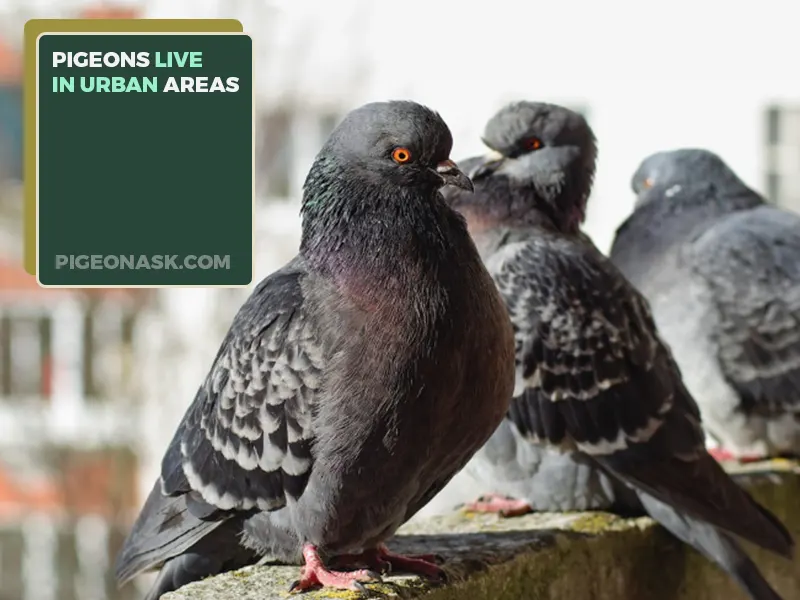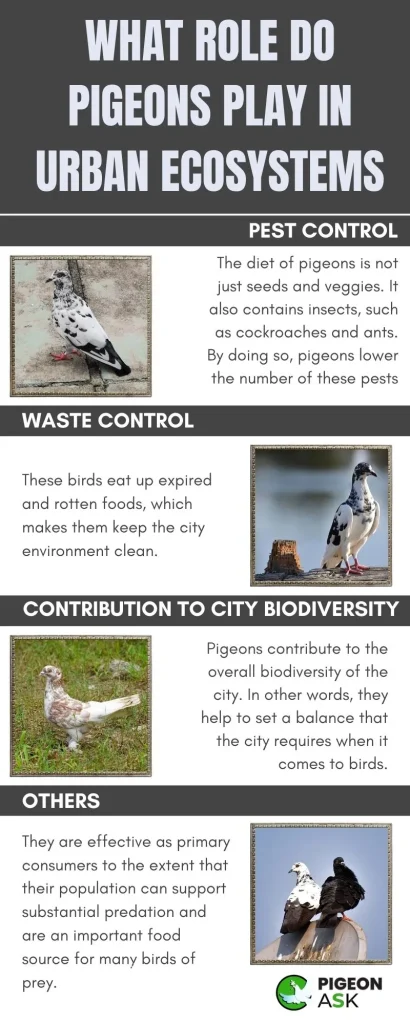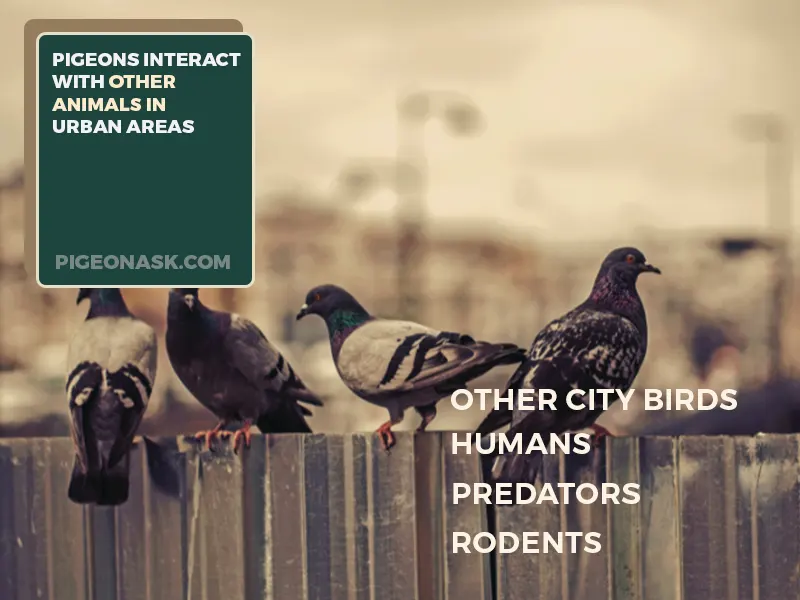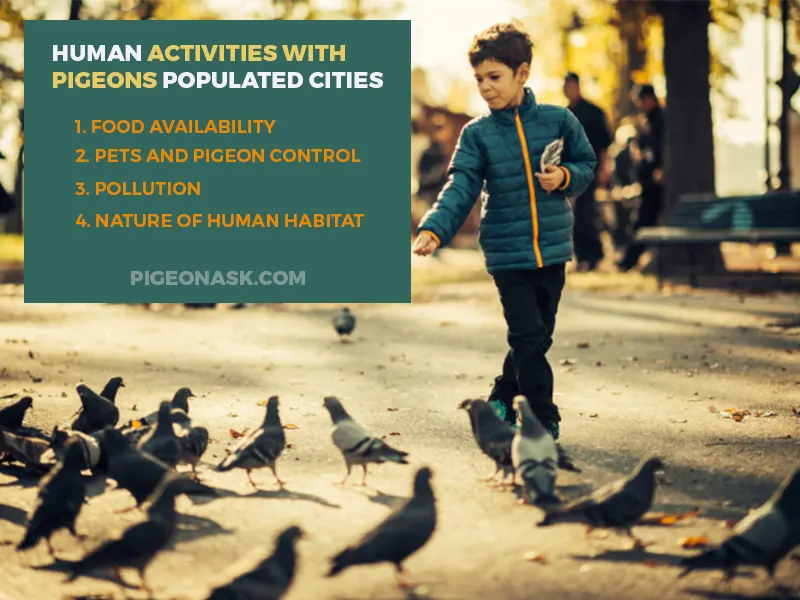Why Are Pigeons Successful In Urban Ecosystems?
You will see pigeons basically everywhere, from parks to ally ways. Seeing how common they are, you might wonder, why are pigeons successful in urban ecosystems? I mean, how are pigeons living and thriving so well in cities?
Pigeons do not find it hard to thrive in urban environments. These birds can feed on anything, don’t require a lot of personal space, and can easily make a place their home. That is mainly why they are successful in urban ecosystems.
But do pigeons help the urban ecosystem? Also, do they interact with other animals present in urban settings? To find answers to these, you will need to keep on reading.
Read more about pigeon blogs:
Do Pigeons Only Live in Urban Areas?
Pigeons live both in urban and natural settings. If you want to talk about numbers, there are more than 400 million pigeons worldwide. And most live in urban areas. [Reference]

In natural settings, you will find them in ledges, caves, rocky cliffs, and in mountainous areas. And just like urban pigeons, the ones living in natural settings like to live in small to large flocks.
However, pigeons in natural settings do not have the same diet as those in urban environments. Whereas the pigeons of urban settings rely primarily on humans for food, the ones in natural areas mainly feed on seeds, grains, and other vegetation.
What Role Do Pigeons Play in Urban Ecosystems?
Like the general ecosystem, pigeons have some role to play in urban settings. Here is a brief description of some factors:

Pest Control
The diet of pigeons is not just seeds and veggies. It also contains insects, such as cockroaches and ants. By doing so, pigeons lower the number of these pests in urban environments.

Waste Control
As hinted earlier, the diet of pigeons is very diverse. They will eat anything and everything. And that is a good thing as they are one of the natural cleaners of city waste.
These birds eat up expired and rotten foods, which makes them keep the city environment clean.
Contribution to City Biodiversity
Being a part of the urban bird community, pigeons contribute to the overall biodiversity of the city. In other words, they help to set a balance that the city requires when it comes to birds.
How Do Pigeons Interact with Other Animals in Urban Areas?
Pigeons have a lot to do in urban areas. Other than just flying around and dropping their feces everywhere, they interact with the environment in these manners:
Other City Birds
All the city birds compete with each other for food and resources. And pigeons are not an exception in this regard. In the city environment, pigeons compete with starlings and sparrows for setting claims on buildings and structures, for example.

Humans
You will find the relationship between pigeons and humans pretty complex. In urban areas, some people hate pigeons, while some love them. And those who think that these birds are nothing but a starter of nuisances will drive them away.
On the other hand, the ones who love pigeons will offer the birds food. And that is generally a common picture in parks.
Predators
The city life of pigeons is not as easy as you might have thought. Even in an urban environment, pigeons have to deal with predators. And no, it is not humans. Instead, pigeons are the prey of several city birds, which include owls and hawks.
Now, the interaction of pigeons with their predators is just like how you would expect. Either they avoid the areas where there are predators, or they become a meal of the birds of prey.
Rodents
Like other birds, city rodents compete with pigeons for food and resources. You will even see some fighting near garbage and waste disposals. And if you are lucky enough, you can even see these birds killing young rodents and eating them.
How Do Human Activities Affect the Pigeon Population in Cities?
Human intervention has a significant impact on the city pigeon population. Some of the key factors are described below:
Food Availability
In urban areas, pigeons mostly rely on humans for food. That is, the food waste that humans produce in the cities is what the urban pigeons rely on. And there will be more of them in areas where food is readily available for the birds.

Pets and Pigeon Control
Pets among city dwellers are a very common thing. For example, cats are predators of pigeons. So, in areas where there are a lot of feral and domestic cats, the number of pigeons will be low.
Pollution
Pigeons are considered to be a key marker of city pollution. You will find a lot of pigeons in areas where the level of air and water pollution is relatively low.
Conversely, there will be a low number of pigeons in locations where humans do not control pollution well.
Nature of Human Habitat
These birds do not really feel like being away from home in cities. That is, the buildings in urban settings closely resemble cliffs. And this type of structuring poses a synthetic habitat for pigeons.
Now, if humans do not take control measures, such as removing the nests from the roofs and ledges, pigeons will not find it hard to populate. On the other hand, culling, trapping, and removal of nests will disturb these birds and lower their population.
Final Words
That is all there is to it regarding the topic. Still, wondering why are pigeons successful in urban ecosystems? In short, these birds are highly adaptive and can thrive easily in city environments. That is why they are so prevalent.
With that out of the way, did you enjoy the article? If so, you will surely love our future posts. To read them right when we publish them, please consider connecting your social accounts with our Twitter and Pinterest accounts.
Article References:
- Livescience.com/63923-why-cities-have-so-many-pigeons.html
- Academic.oup.com/jue/article/4/1/juy024/5214715
- Intechopen.com/chapters/66330
Image Credit:
- Canva.com/photos
